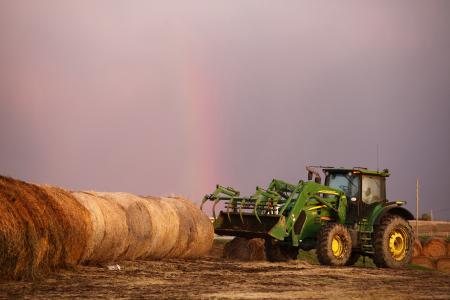Storing Forages
It is essential to harvest forage at the best time, from the point of view of nutritional quality, quantity available and climatic conditions, and then to store it properly to reduce losses. The objective of harvesting forage for storage is to preserve forage produced in the summer months in order to ensure winter feed for livestock when grazing is not feasible or accessible.

Hay uses desiccation or dry storage containing less than 15% water to prevent spoilage. Silage or wet storage uses the acidifying power of lactic bacteria, which reduces the pH to around 4, below which all chemical reaction and fermentation ceases. Haylage usually refers to a crop that is wilted to 60% moisture and is stored in oxygen limited structures or plastic bags. Limited haylage is produced in North America due to material handling problems, however it is very popular in Europe.
Hay baled at a high moisture content will spoil and mold. Silage must be firmly packed to minimize the oxygen content or it will spoil.
Silage can be successfully made from any green crop that has sufficient water-soluble carbohydrates and appropriate moisture content.1 In regions where frequent rain has a high risk of reducing hay quality, silage is a better option for storing forage nutrients. In regions that are dry and have challenges with targeting 68-70% moisture in silage after wilting due to high evapotranspiration, hay is preferred assuming the same forage is used with comparable quality and yield.
Click here to subscribe to the BCRC Blog and receive email notifications when new content is posted.
The sharing or reprinting of BCRC Blog articles is welcome and encouraged. Please provide acknowledgement to the Beef Cattle Research Council, list the website address, www.BeefResearch.ca, and let us know you chose to share the article by emailing us at [email protected].
We welcome your questions, comments and suggestions. Contact us directly or generate public discussion by posting your thoughts below.